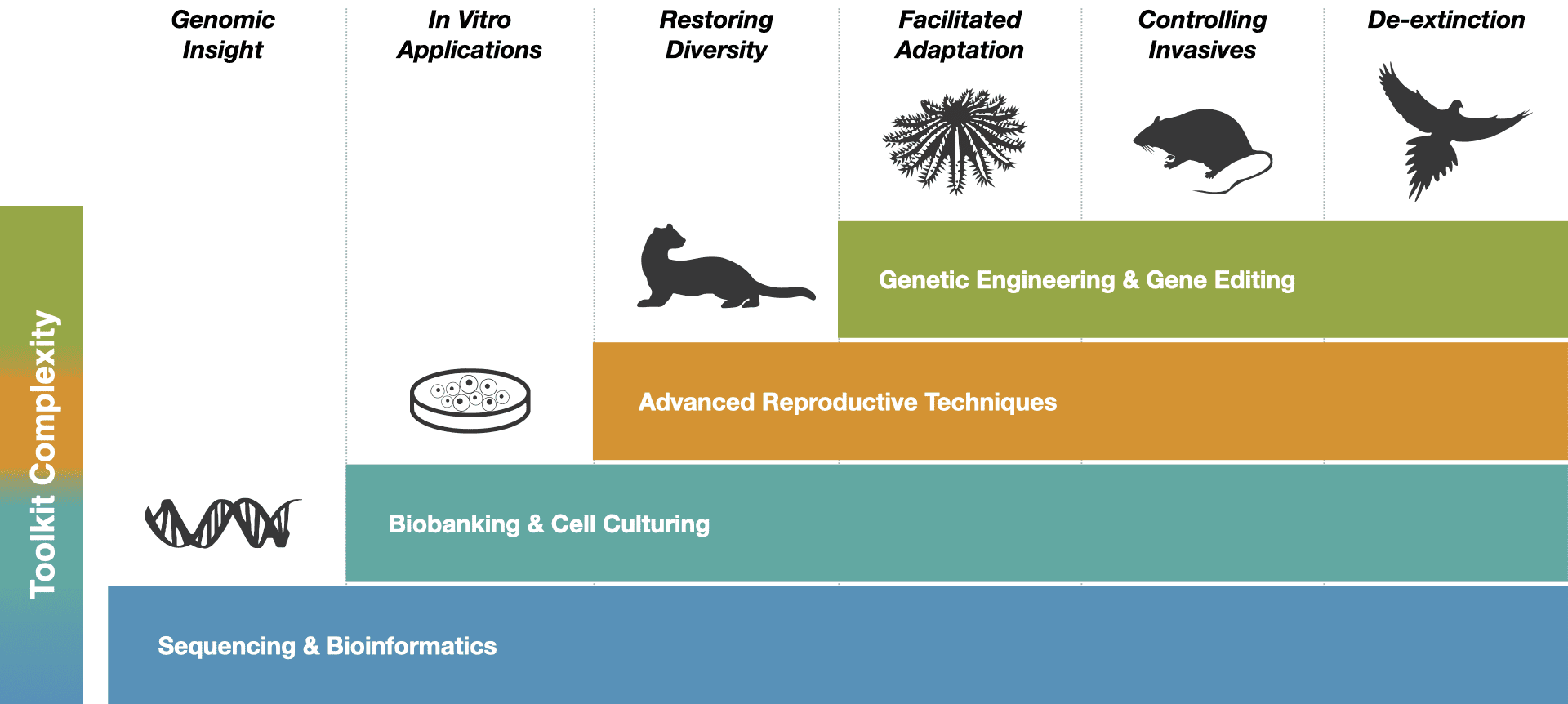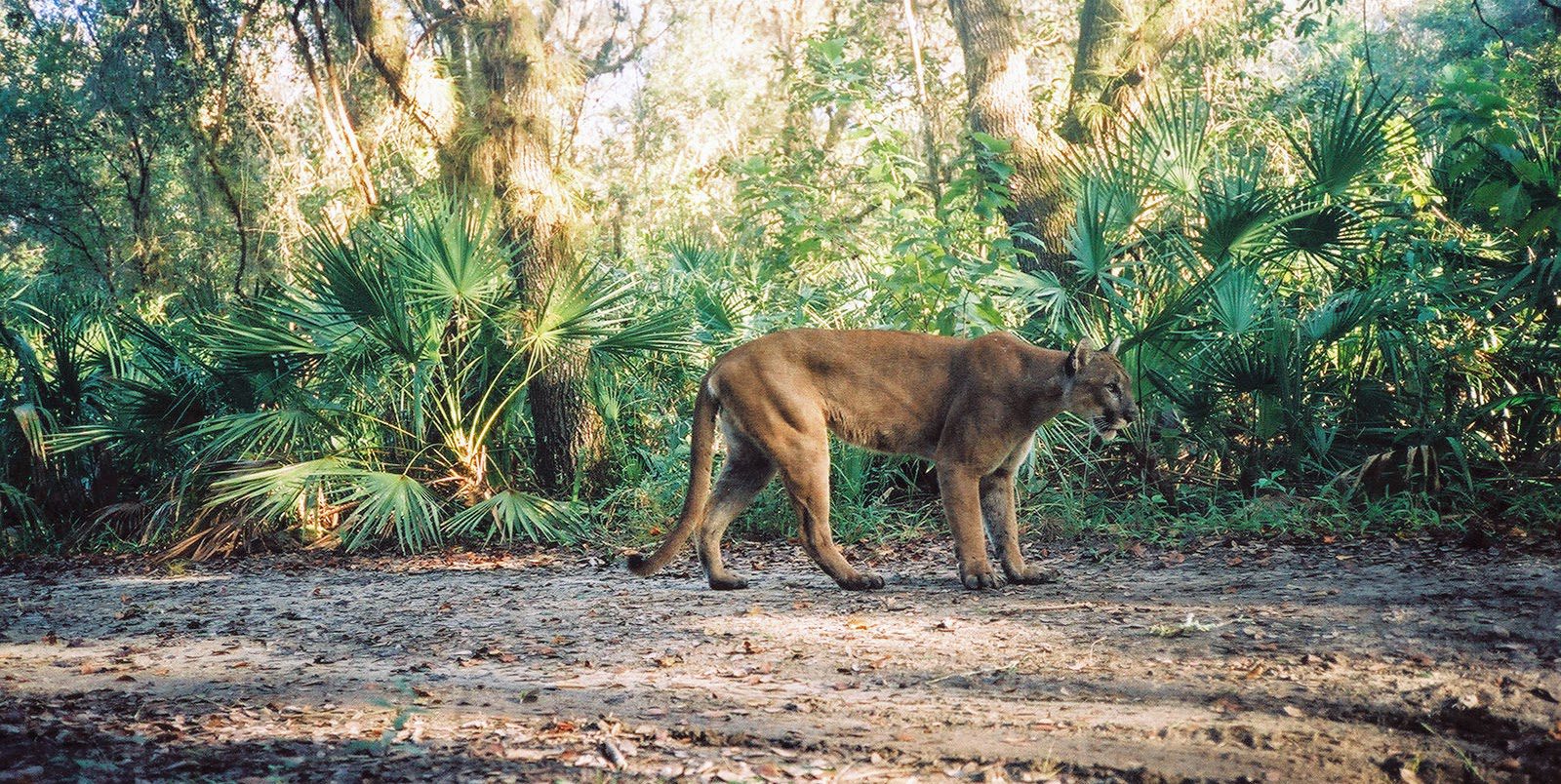With the increasing affordability of genomic sequencing and the expansion of gene-editing technologies, there is an opportunity to develop new genetic rescue tools that complement conventional conservation practices. To advance biotechnologies for wildlife, Revive & Restore is building the Genetic Rescue Toolkit, a suite of biotechnology tools that help solve some of the world’s most pressing conservation challenges.
As threats to wildlife increase with the pace of climate change, so too must our conservation strategies. By advancing the Genetic Rescue Toolkit, we are laying the foundation for unprecedented conservation approaches to tackle unprecedented conservation challenges. Genetic rescue is the goal, and the Genetic Rescue Toolkit provides the tools we need to get there.

The Genetic Rescue Toolkit: From bottom to top, these biotechnologies form the building blocks of genetic rescue. Sequencing and biobanking are foundational tools that enable more advanced technologies, from cloning to genetic engineering.
Genetic Rescue Then and Now: The Florida Panther
Historically, genetic rescue has been a practice of helping animal populations suffering from low genetic diversity by introducing healthy individuals from unrelated populations. One famous success story is of the Florida panther. In 1995, fewer than 30 Florida panthers lived in the wild. Due to a severe population bottleneck and inbreeding depression, irregular (or “maladaptive”) physical traits evolved and fertility declined.
To increase genetic diversity and save the species from extinction, the US Fish and Wildlife Service translocated eight female Texas cougars into Florida to mate with the panthers (both are different names of the same species, Puma concolor). The resulting population grew quickly and fitness increased. There are now between 120 and 230 panthers living in the Florida range. The translocation was a success.

A Florida panther living in Everglades National Park. The photo was taken in 2016. (USFWS)
The increase in genetic diversity improved the resilience and adaptability of the Florida panther population. This remains at the heart of all genetic rescue approaches. And, today’s genomic technologies offer a broader suite of methods, more specific outcomes, and more precise insights.
In 2019, for example, researchers performed a genetic analysis of Florida panthers to evaluate if the present generation was still benefiting from the 1995 translocation. Using genome sequencing, the team found that the panthers had retained higher diversity than expected. The team was also able to calculate a proactive management plan for future translocations. Their genomic insights revealed that the Florida panther population’s health can be maintained with at least five translocations every 20 years, enabling precise long-term planning to prevent future declines.
From restoring genetic diversity to making de-extinction possible, our Catalyst Science Fund projects are helping to build the Genetic Rescue Toolkit. Currently these projects are solving for specific problems for single species. But with further research, these findings will be applied more broadly. Learn More About Our Catalyst Science Fund >



